How to calf share. This is how we personally manage sharing milk with the calves so that the babies can still be with their mamas!
This post may contain affiliate links. Read my disclosure policy here.
I absolutely love seeing our whole herd of cows together.
Mamas with their babies!
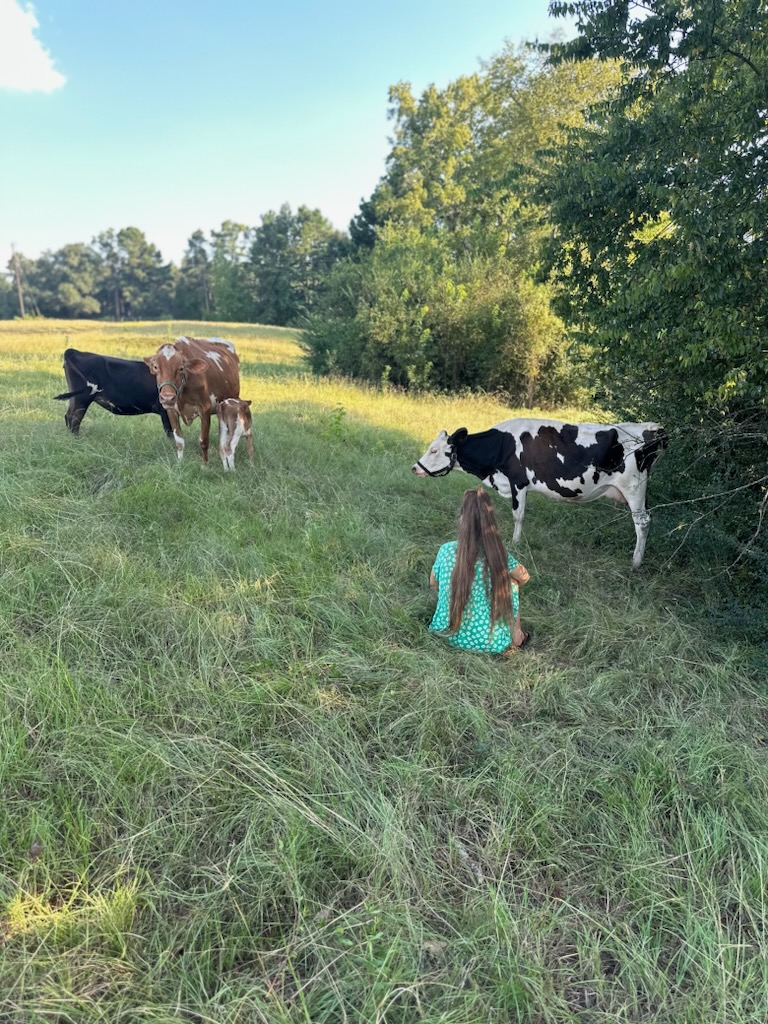
Why calf share though?
They teach those calves so much about what they need to know about being a cow when they can be left together!
The heifer calves learn proper cow behavior and are raised with superior nutrition being on their mama’s milk vs milk replacer.
Bull calves almost especially need to be raised by their mothers so they don’t become aggressive as adults. You hear so much about dairy bulls being aggressive and super dangerous. But most of those have been separated from their mothers, and hand raised by humans. A recipe for disaster.
I can’t recommend following Reverence Farms enough! They have a large dairy and they calf share with all their mamas! She has shared so much amazing information about the benefits of it for both heifer and bull calves.
Calf sharing also provides you a way to actually take a break from milking.
If you need to take even a couple days off, simply don’t separate the calf at night and they will drink all the milk you would have milked out in the morning.
It’s also my opinion that it lowers the risk of mastitis.
At least certain kinds. A lot of people would disagree with me on this point, but everyone is entitled to run their farms however works best for them personally 😉 Some mastitis is caused by dirty conditions and bacteria, and some is caused by not milking out thoroughly enough. If you have the calf on the cow all day they keep her so much better drained out than I could. That lowers your risk of mastitis. Also when a calf nurses they actually help mama seal off the end of her teat so bacteria is less likely to enter. The times when we have dealt with mastitis the calf is a huge lifesaver! Instead of me having to milk 3 or 4 times a day to strip the mastitis out, the calf does a lot of it for me!
Anyway, I could go on and on about the reasons we calf share, but that’s not why you are here. You’re here to find out HOW we go about calf sharing!
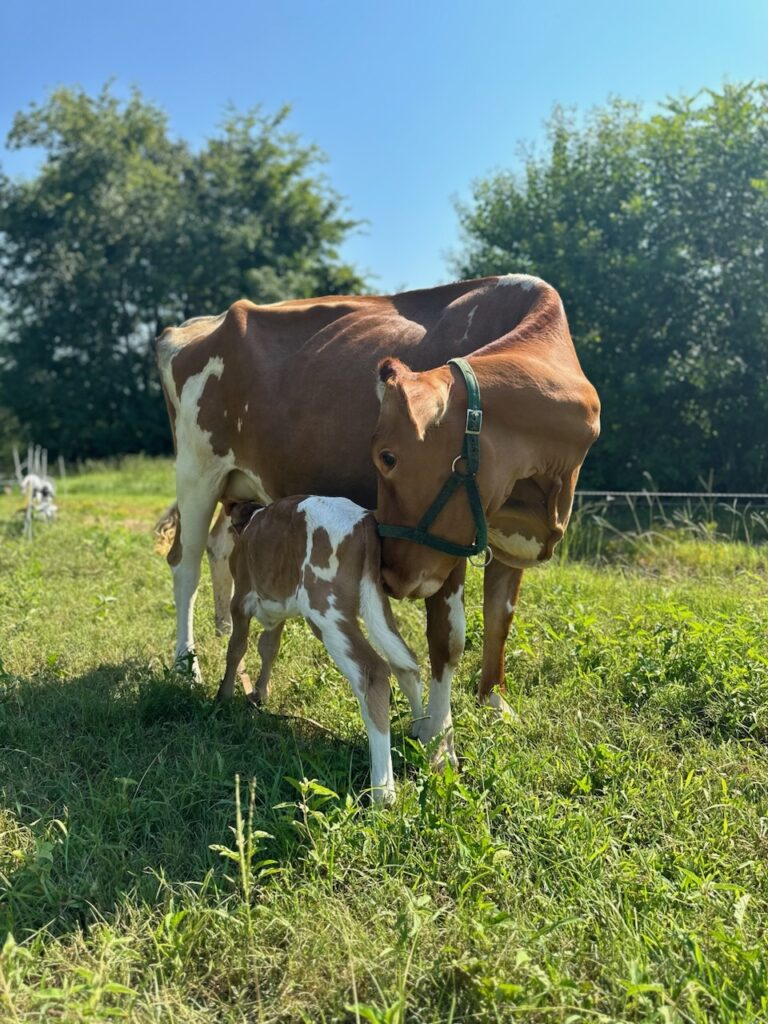
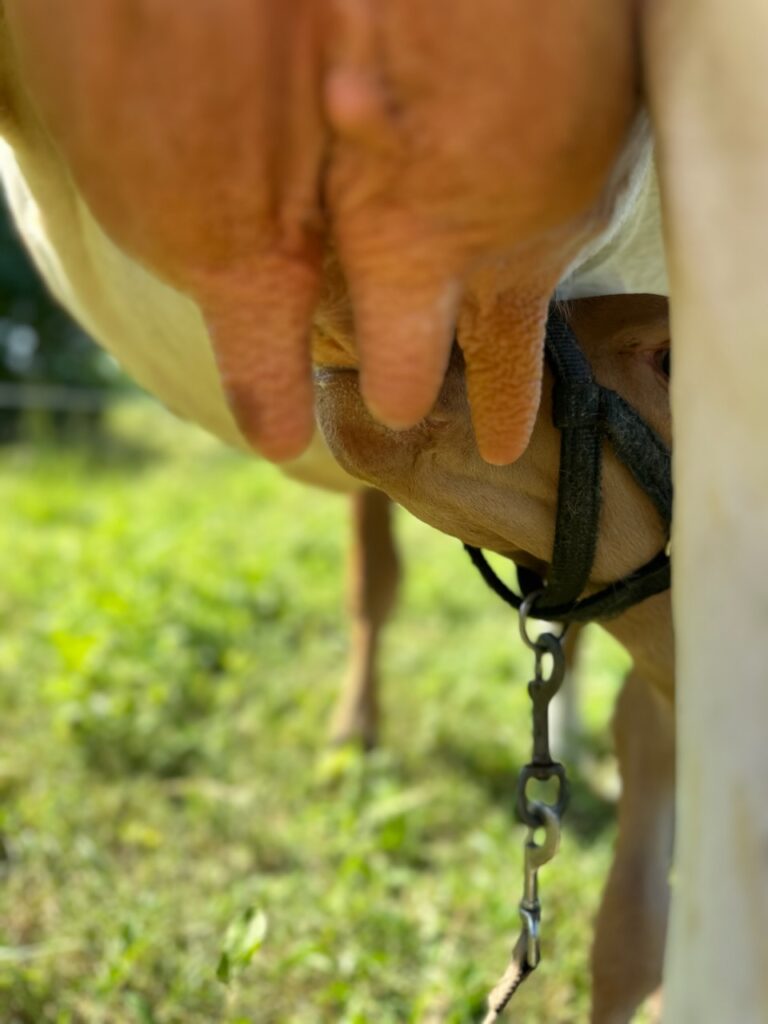
Each milkmaid seems to have a slightly different method when it comes to calf sharing. You have to find out what works best for you and your situation.
How to calf share
For the first few days after calving we leave mama and baby together 24/7. We bring mama to the stanchion once a day and milk out the colostrum. Then after a few days her milk comes in and we get to start drinking it!
Pretty quickly we start separating the calf at night. It seems like a lot of people wait to start separating the calf at night until a month or two old. But that has never worked for us, with either of the cows we have owned. Mama will start holding her milk back from us and we need to use the calf to get her to let down. But you can’t use a calf to get a let-down if the calf is already completely full. So they have to be separated a few hours before milking so they are motivated to bump the udder and nurse.
When they’re still really little we will separate them right before we go to bed so they aren’t going without milk for quite as long. But then once they’re a month old they can go 14 to 16 hours separated.
Our current calf Luna (almost 3 months old) gets separated at 7pm. We milk mama Lois in the morning around 8:30am. Then Luna goes back with mama around 10 or 11am usually.
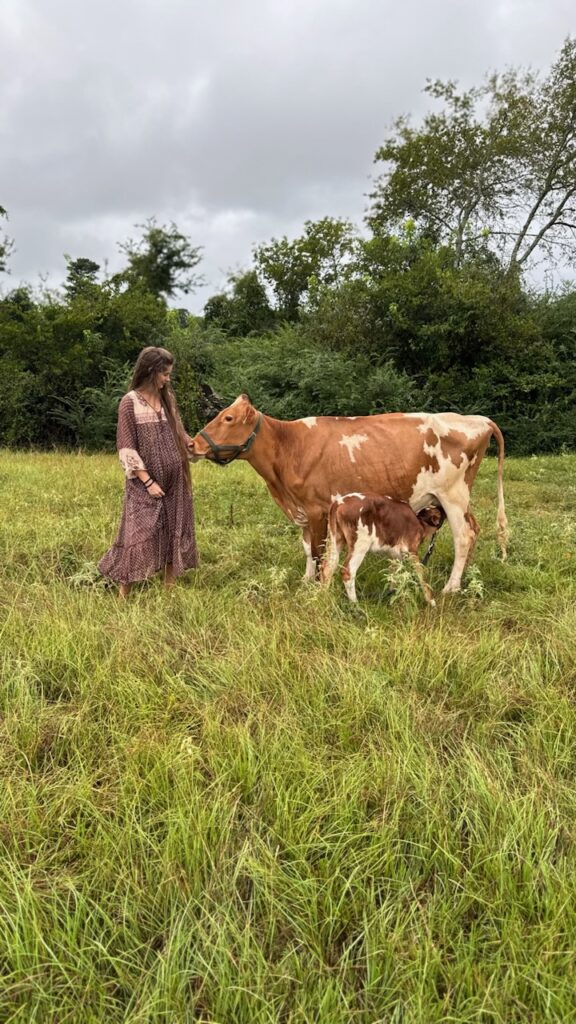
Why do we wait a couple hours after milking to reunite them?
We used to just put the calf right back with mama as soon as milking was over. But we noticed a couple things going wrong when we did that.
Firstly the mama cow’s teats were getting really cut up by the calf being super rough. The calf was being super rough because we had just taken pretty much all of the milk. When we waited an hour or two after milking mama had enough milk built back up that the calf wasn’t nearly as aggressive. That really helped with cuts on the teats.
Secondly mama cow started holding her milk back even worse! She knew that she was going to go back with her baby immediately when we were done and she wanted to make sure she had some left for her. We would get less and less milk every morning and were getting almost no cream at all. Once we started waiting the hour or two mama slowly got better. She knew that by the time baby was back she would have milk again anyway, so she let down her milk for us like a charm.
I have head this is ESPECIALLY important for first calf heifers. You have an opportunity to help teach them better milking habits and good let-down. When the calf isn’t anywhere around and she’s not going to get them back for awhile then mama learns to associate milking with just you. It’s not associated with her calf, its just a you-and-her-thing.
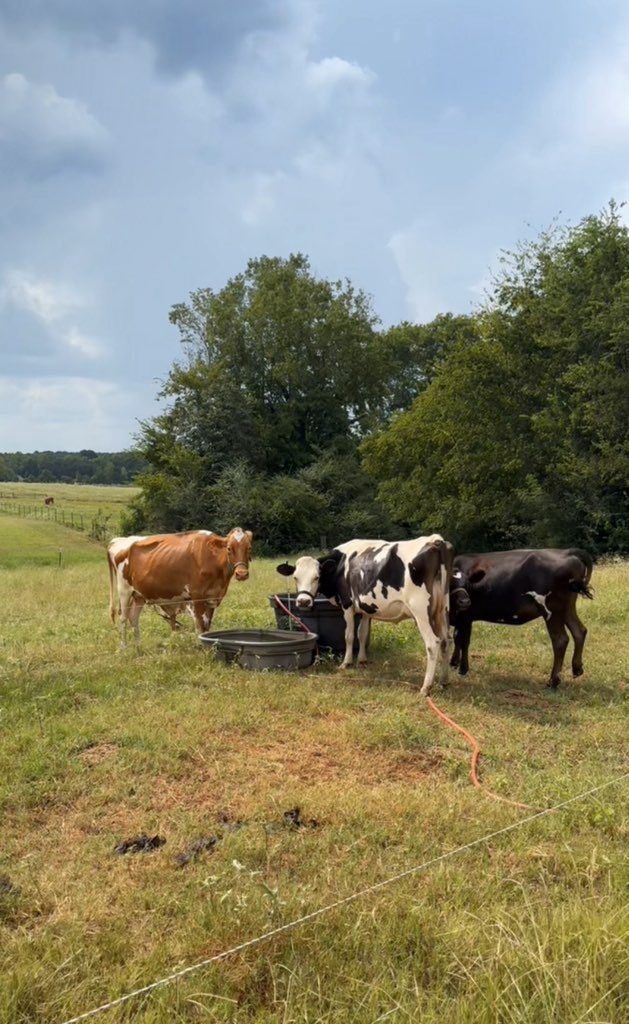
Using the calf to get a milk let-down
I have found that I need to use the calf for the first few weeks to get the mama to let down. That kind of teaches her that she needs to during milking.
- First we milk out everything we can.
- Then we go get the calf and bring it over to the stanchion.
- The calf headbutts the udder and starts nursing. You will know when she has let down because the calf will start gulping milk and breathing differently. Also her teats will inflate and the wrinkles will start to go away.
- Pull the calf away. We just tie her near mama’s head.
- Milk out the rest of the milk.
With both our cows we have done this for somewhere between 2 and 4 weeks in a row. We slowly stop using the calf at that point. Usually mama is letting down pretty much all of her milk during that first milking, so we just don’t bring baby over. But we also make sure to wait the whole 2 hours after milking to put them together.
I’ve found the combination of doing all that helps a ton with teaching mama that she can let down her milk during milking time.

How long to calf share?
Since we are raising Luna as another milk cow, I want her to have the best start possible. So I’d like to let her stay on mama Lois and nurse for 6 to 7 months. This also means doing zero grain because I do not want her rumen to develop too fast. I want her raised on milk and grass so that her body is more metabolically ready to produce milk on more grass and less grain. Less inputs the better.
The whole grain or no grain as calves is a whole other discussion that I won’t get into right now, but Reverence Farms is a great resource for why and how to go grain-free.

All my milkmaid friends each seem to have their own slight variation to calf sharing. There is not one right way to do it! Some people do 12 hours off and 12 hours on. Our method of 14 to 16 hours off has worked great for us. Along with not putting them back together immediately.
I hope reading about our process has helped you figure out how you want to calf share!
And blesssings!
Pin it for later!
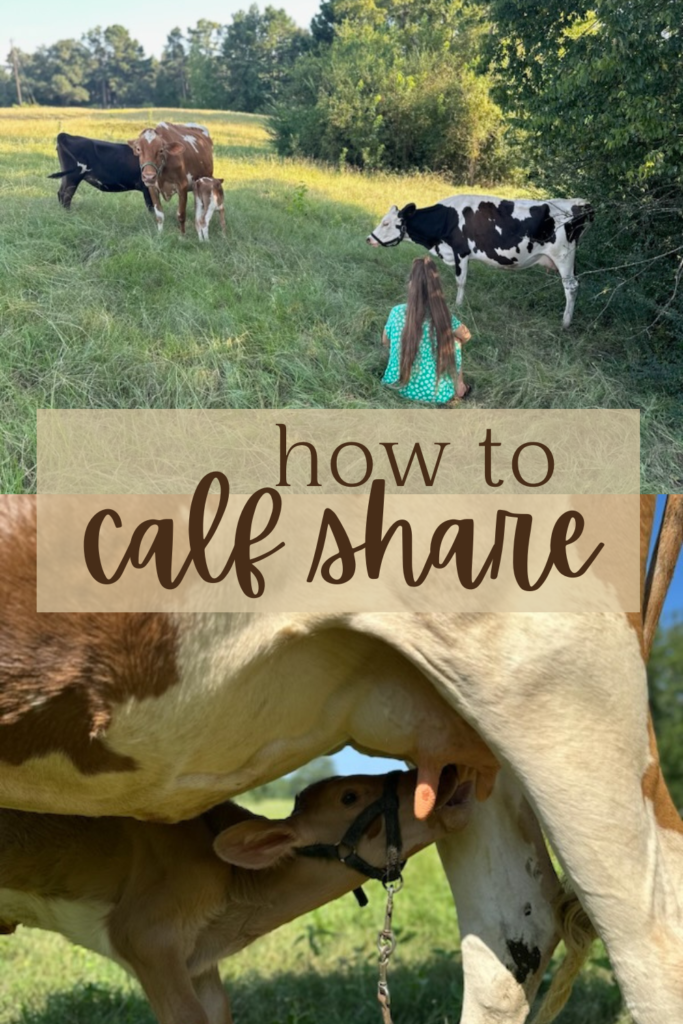
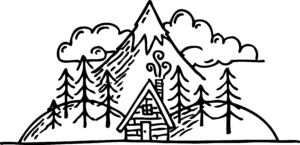
Leave a Reply